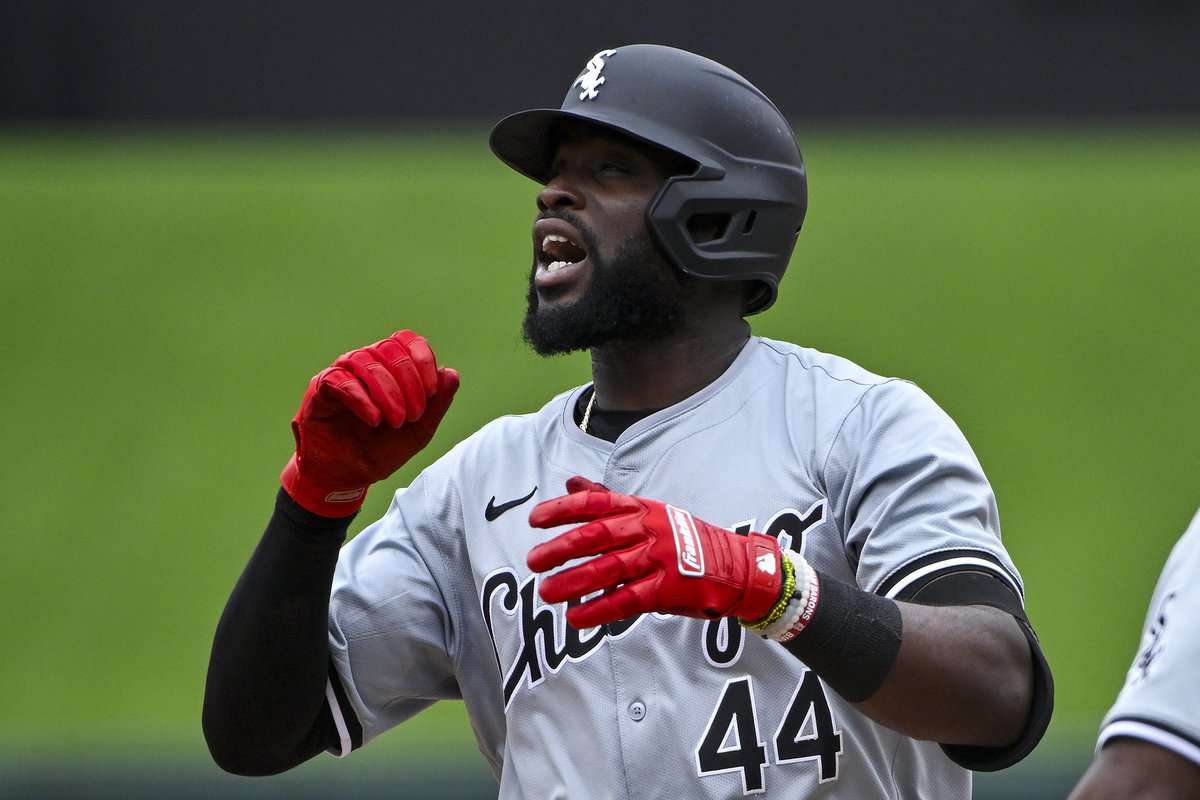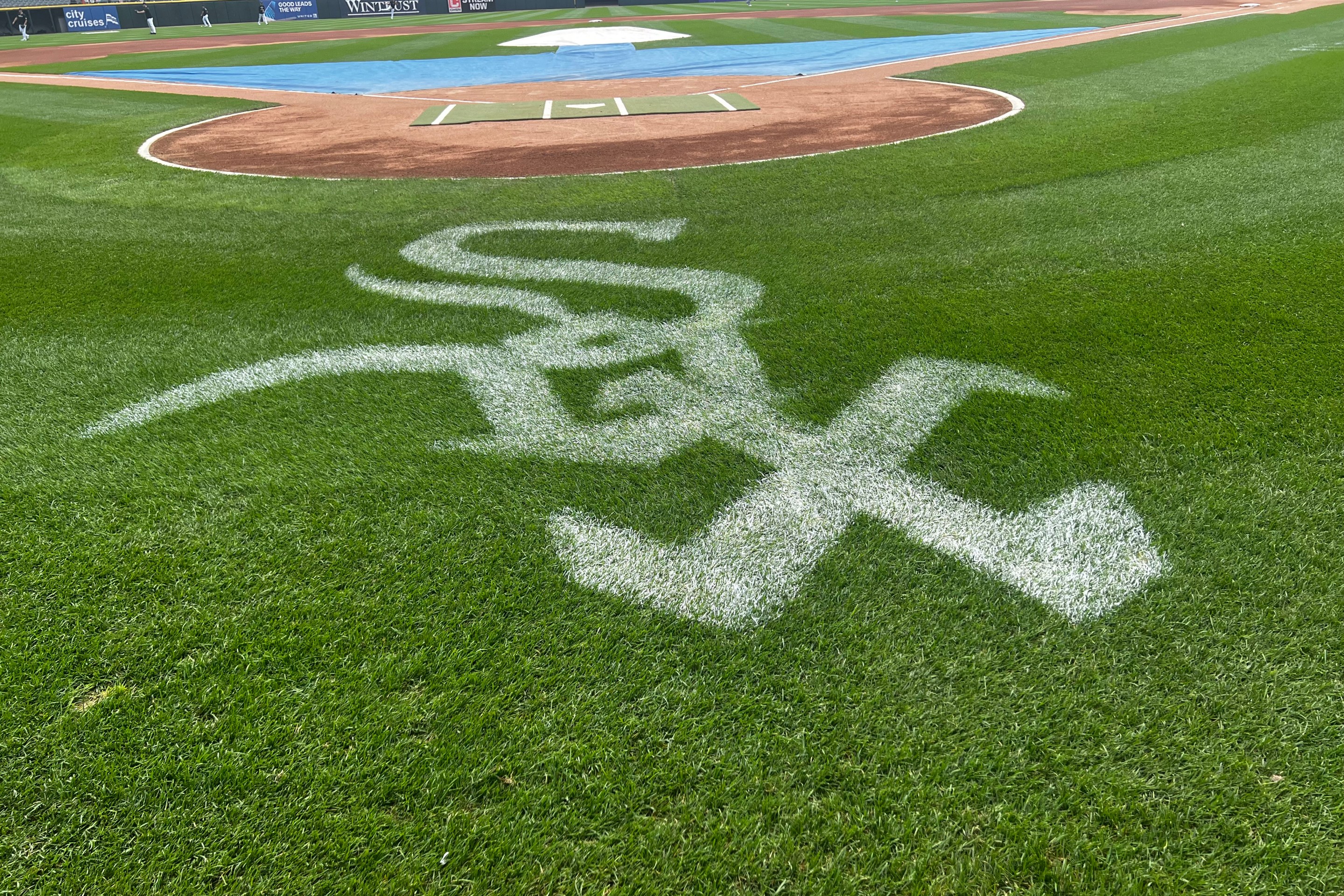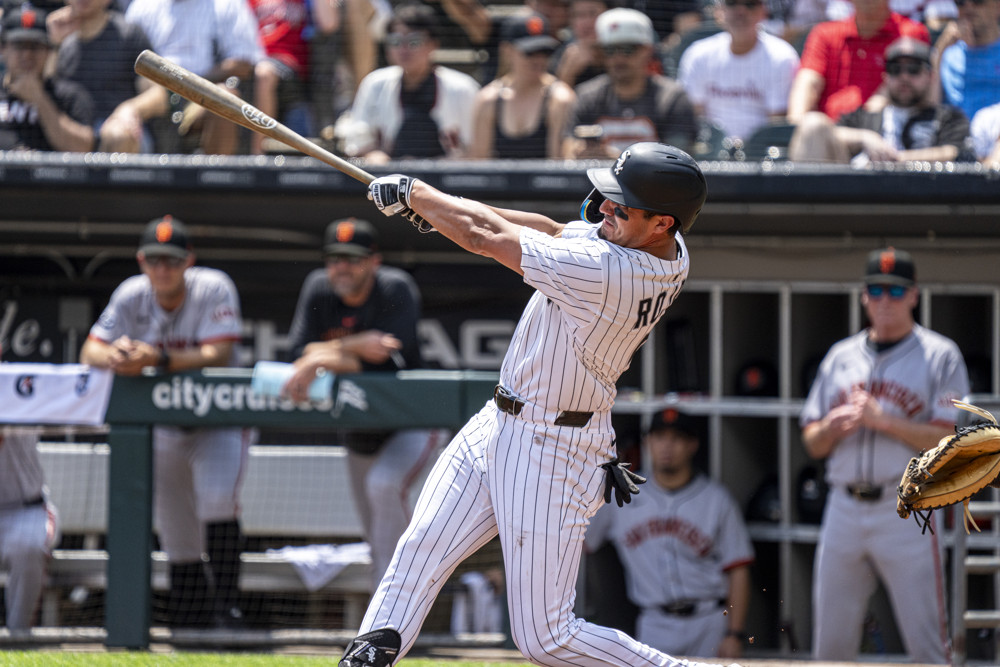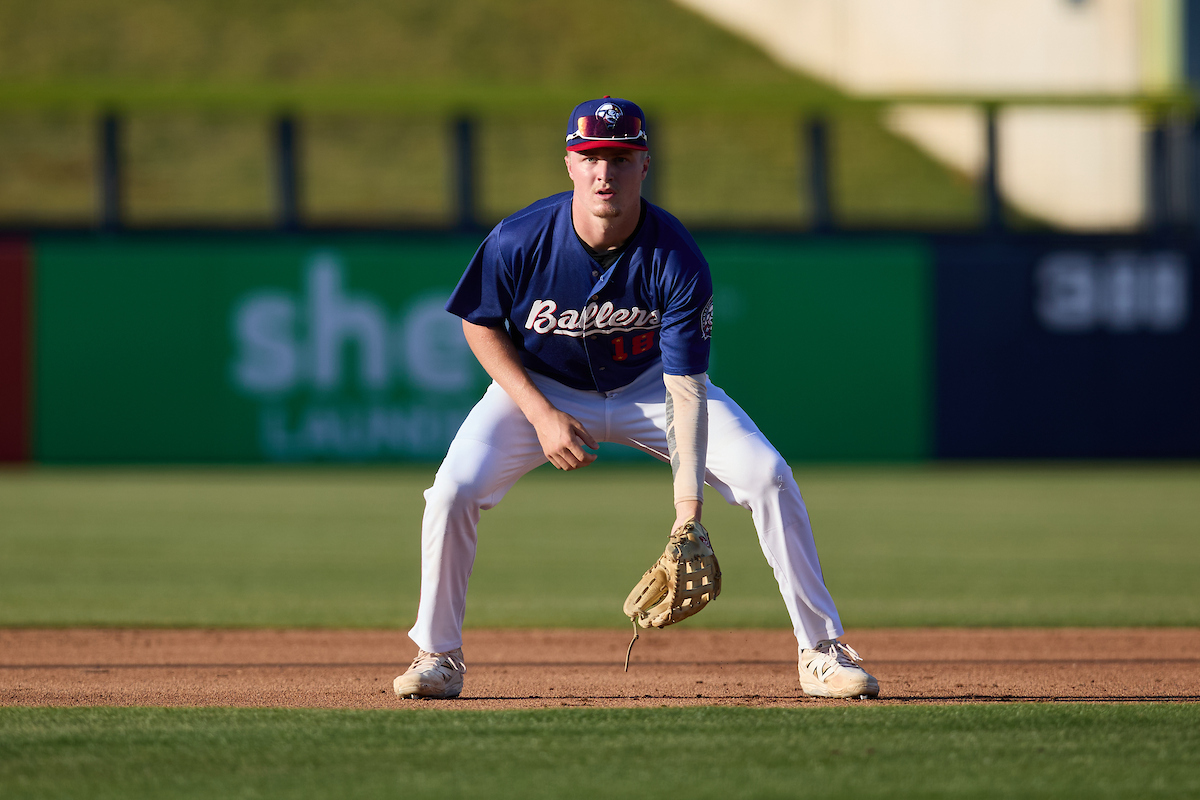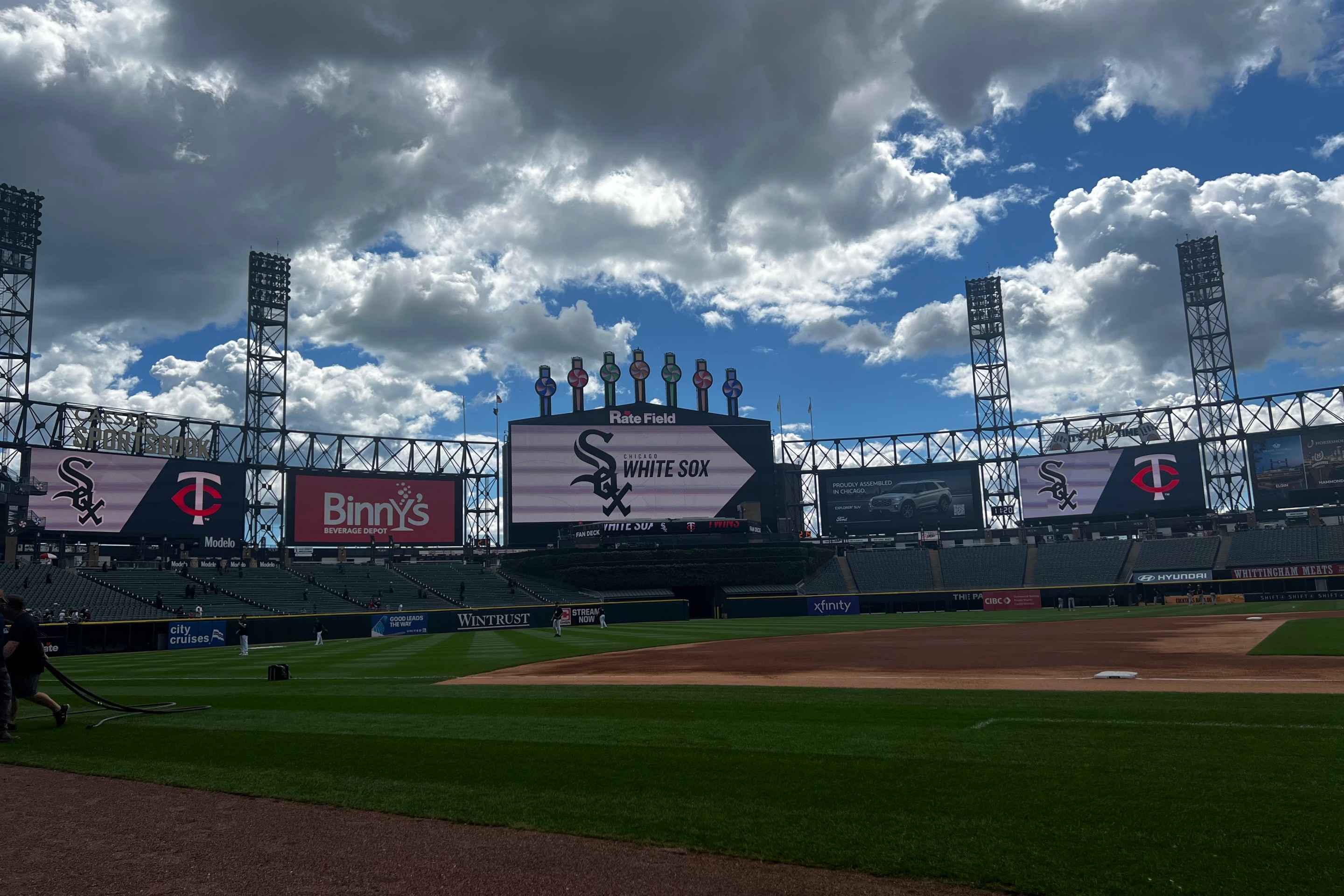Considering Bryan Ramos was hitting .182 for Double-A Birmingham when the White Sox came calling due to a lack of any other healthy infielders on the 40-man roster, the start of his big league career could certainly be worse.
But with Ramos neither dominating nor being dominated while Danny Mendick approaches a return from his back injury, it's hard to know what course of action is best.
Nine games into his major league career, Ramos is hanging in there. He's hitting .267/.281/.333 with two doubles, one walk and just three strikeouts over 32 plate appearances. Glass half full, he's not being overmatched, and he's providing steady defense, at least after bouncing his first MLB throw. Glass half empty, he finished the Cleveland series going 1-for-12, and in a way that could foreshadow future struggles.
Ramos only struck out once over those 12 plate appearances, but that's partially because his plate appearances don't last long enough to get to three strikes. He saw no more than 14 pitches in any games, and his average of 3.31 pitches per plate appearance is the second-lowest on the team to Braden Shewmake.
Yet Ramos isn't swinging recklessly. His 16.1 percent chase rate is the lowest on the White Sox -- even lower than Robbie Grossman's was, and Grossman's batting eye got him traded back to Texas. The first burst of Statcast bat tracking data has Ramos pacing his new clubhouse in squared-up rate. That distinguishes him from Shewmake, whose 40 percent chase rate is second-highest to Lenyn Sosa.
What stood out over the last three games was the pitches Ramos put in play, particularly the ones from Cleveland's righties on Friday and Saturday.
There wasn't a fastball among them:
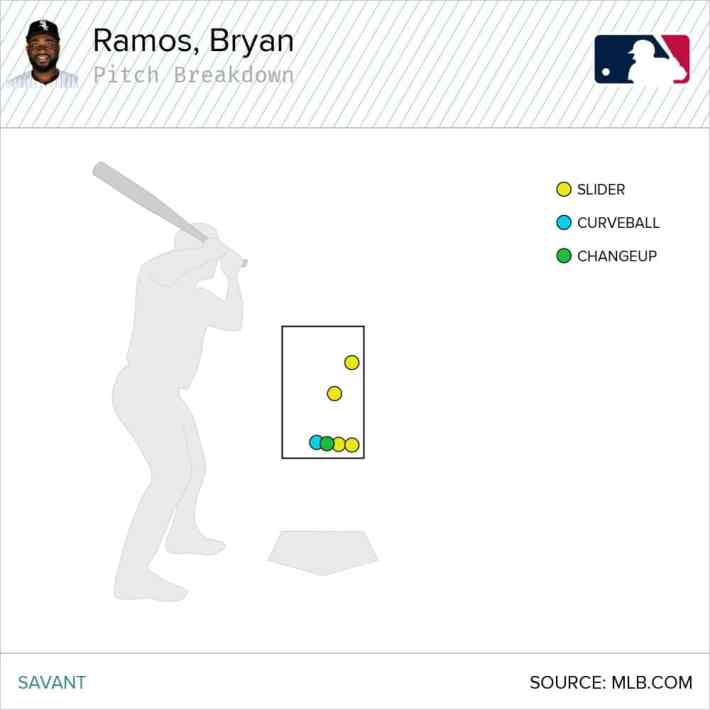
When you look at the video, none of these are bad swing decisions in isolation, and two of them had some promise off the bat:
Sometimes competent, professional-looking 0-for-4's signal a breakout in the near future. Sometimes those quiet 0-for-4's beget more quiet 0-for-4's. It's the kind of small sample that raises questions, but healthy questions. Open questions. Questions for everybody to ponder as they watch Ramos go from plate appearance to plate appearance, including but not limited to:
Is Ramos going to continue seeing an overwhelming amount of breaking balls? If so, are they going to keep throwing them in the zone with the assumption that he's not advanced enough to damage MLB spin with regularity? If so, can Ramos foil them once he gets a little more acclimated to tracking MLB-caliber breaking pitches, or will he just keep making quick outs that can go unnoticed in isolation?:
Given that Ramos is just 22, arrived with no assurances nor expectations that he was here to stay, and didn't light the Southern League ablaze before the Sox came calling, I have my suspicions. Pedro Grifol could harbor his own, which is maybe why he didn't promise anything beyond playing him while he's on the roster:
"It’s not obvious [that he won’t be sent down], but he’s got to continue to play. This is not four out of seven or anything like that. This is a long haul. He’s doing really well right now. We’re taking it day by day with him.”
Grifol's opacity is usually the result of taking a simple question and talking in circles until he fogs up the glass, but here's a case where a non-answer is the most honest one. Ramos hasn't told anybody with his play whether he can stick, so you have to keep interrogating his bat until it gives a more convincing answer.
Adding to the lack of clarity, the best argument right now for keeping Ramos in the majors is that there isn't yet an obvious answer regarding where else he should go.
The Birmingham Barons certainly miss Ramos' bat in the lineup, but he already enjoyed a fair amount of success in Double-A in 2023, which made it easier to shrug away his very slow start to 2024. It'd be weird to send him down two levels if he represented himself well in his initial MLB audition, no matter what kind of boost he'd provide to Birmingham's playoff odds.
The obvious answer is then Charlotte, who presently has no one anchored to third base, but one question around baseball is whether Triple-A pitching is adequately preparing prospects for the majors. The high-profile stumbles of prospects like Jackson Holliday, Wyatt Langford, Henry Davis and Jackson Chourio have drawn attention to the widening gap between Triple-A and the majors, which Ken Rosenthal wrote about last Thursday. Among the numerous reasons for the divide, the part incorporating Eno Sarris' Stuff+ data stands out:
Then again, linear progression for prospects hardly is assured, especially when major-league pitching is so much better than it is at Triple A. Stuff+, a metric that judges pitches by their physical characteristics (spin, velocity, movement), portrays the difference vividly.
Through Monday, the average Stuff+ of every pitch in the majors was 100. At Triple A, it was 86, down from 95 last season. Among major-league starting pitchers, that’s roughly the difference between Mitch Keller and Griffin Canning. Only 29 starters out of 142 have thrown 20+ innings with a worse than 86 stuff.
White Sox Director of Player Development Paul Janish told James Fegan that fans shouldn't be surprised if the Sox promote directly from Double-A, and this is a reason why. Even if the timing of Ramos' call-up was initially dictated by emergency more than his burgeoning talent, the characteristics of the levels remain the same.
That's not to say Charlotte has nothing to teach a hitter. For instance, Colson Montgomery needed a month to adjust to Triple-A, but that's partially due to his advanced plate discipline. He told James that he had to get used to the way longer sequences unfolded at Charlotte, like the challenge system turning borderline balls into strikes, and more confident pitchers who will aim for the same spot with the same pitch multiple times instead of aborting the mission after a miss.
Ten games into May, it seems like Montgomery is learning the ropes:
- April: .211/.324/.358, 13 BB, 38 K over 112 PA
- May: .265/.419/.618, 9 BB, 8 K over 43 PA
Ramos has always been an aggressive hitter, so he isn't likely to benefit from the same detailed education of sequencing. He also doesn't seem to have a particular problem recognizing spin out of the hand, at least in a way that confuses balls for strikes. His task is more nuanced, along the lines of learning to get the barrel to a breaking ball in a count where he might not be expecting one. If he's not looking completely overmatched by the steady drumbeat of the toughest pitching he's ever seen, should he get the chance to keep plugging along until or unless the circumstances grow dire?
Again, another open question. That's all there is, which is far preferable to Ramos answering every question in the negative because he's 22 and has never seen Triple-A pitching. A prompt and brutal humbling was the most likely outcome at the start of this experiment, so he's inviting the good kind of uncertainty.
